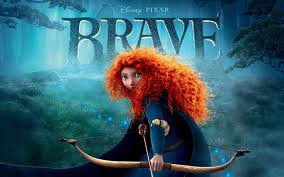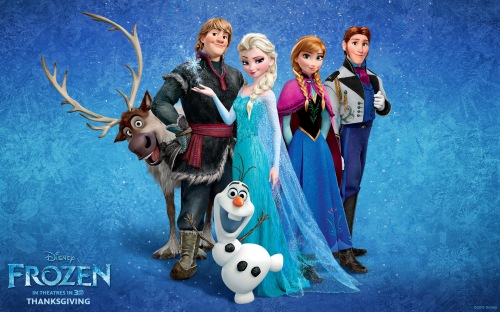 At the suggestion of one of my readers, I recently started reading the Korean webtoon, Cheese in the Trap. Since I ended up spending most of my weekend reading all the chapters that have been translated into English, I can confidently say it’s addicting.
At the suggestion of one of my readers, I recently started reading the Korean webtoon, Cheese in the Trap. Since I ended up spending most of my weekend reading all the chapters that have been translated into English, I can confidently say it’s addicting.
Hong Sul is a 23-year-old college student who has just returned to school after taking a leave of absence. Much to her surprise and suspicion, Yoo Jung, a handsome, popular, and super rich upperclassman, suddenly wants to hang out with her. While he seems like the perfect guy to just about everyone else, Sul is convinced he’s hiding a dark side.
 The premise may sound typical, but the execution is anything but. Switching between the past and the present, readers (and Sul) try to piece together what happened before the heroine took her leave of absence and reconcile that with the present situation. At first this can be a little disorienting, especially since some of the characters’ relationships are so different in the past compared to what they are in the present, but after a chapter or two, the pattern becomes clear and a good back-and-forth flow is established. Flashbacks often reveal something about Sul’s relationships and her experiences with people while simultaneously deepening the mystery.
The premise may sound typical, but the execution is anything but. Switching between the past and the present, readers (and Sul) try to piece together what happened before the heroine took her leave of absence and reconcile that with the present situation. At first this can be a little disorienting, especially since some of the characters’ relationships are so different in the past compared to what they are in the present, but after a chapter or two, the pattern becomes clear and a good back-and-forth flow is established. Flashbacks often reveal something about Sul’s relationships and her experiences with people while simultaneously deepening the mystery.
Along the way, issues like bullying and stalking pop up and so far, those issues have been handled well. Those instances add drama yet are presented as serious problems. Perhaps that’s why watching Sul deal with bullies has been inspiring. Although she keeps many things (like her worries and problems) to herself, Sul speaks up and rationally confronts others when she needs to. Her attempts don’t necessarily end the problem and more often than not someone else–usually a guy–has to intervene, but there’s a sense of satisfaction at seeing her stand up for herself and others. She never feels like a damsel in distress who frivolously tries to make a stand. Her words and actions mean something and the help she receives–be it from a man or not–seems realistic.
There’s also much enjoyment to be found in the daily life of Sul and her classmates. While I’ve read slice-of-life manga before, Cheese in the Trap is one of the few that tackles the realities of college students in a way that is both entertaining and down-to-earth. How often have you seen your favorite slice-of-life characters complain about the cost of tuition? We see Sul talking to friends about school-related issues, dealing with horrid group projects, and trying to balance top grades with jobs. It’s common for school to become just a backdrop for the social drama that is the focus of the story.
Additionally, slice-of-life dramas/romances often center on the school-age heroine’s search for romance. When academics are mentioned, it’s customarily at the detriment of the heroine who is revealed to be a poor student. Making some heroines of school-based series struggling students is one thing. It’s good to represent a variety of people so, depicting such a protagonist strikes a chord with those of us who struggled in school or know someone who did. Yet at the same time, like with many of the trends and tropes I discuss on this blog, seeing the majority of those heroines fail academically gets old. Ultimately, the school girl heroine, who is supposed to represent an average, likable girl, coincides with academic underachievement and that’s not a particularly good message.
Therefore, the fact that Sul puts an emphasis on her academics set this comic apart from others that I’ve read. She works hard to get good grades so  that she can get scholarships takes on jobs to support herself and get through school. She doesn’t even bother with romance because she’s afraid it will distract her from her academics. It’s made clear that Sul’s top grades aren’t the result of genius, which might have made her hard to relate to for a major of readers, but rather the result of hard work and sacrifice. Sul’s character is still that of a normal young woman, but she represents different struggles that are just as important to depict as the struggles depicted by the typical school girl type.
that she can get scholarships takes on jobs to support herself and get through school. She doesn’t even bother with romance because she’s afraid it will distract her from her academics. It’s made clear that Sul’s top grades aren’t the result of genius, which might have made her hard to relate to for a major of readers, but rather the result of hard work and sacrifice. Sul’s character is still that of a normal young woman, but she represents different struggles that are just as important to depict as the struggles depicted by the typical school girl type.
The rest of the cast and Sul’s relationships with them are equally remedying. The joys and troubles of relationships explored in Cheese in the Trap are not limited to those of dating and romance. Instead, there is a healthy mix of friendships, potential romances, classmates, family, and everything in between. Another nice change is that the romances aren’t presented as rosy dreams of young lovebirds, driven by destiny and the search for “the one.” While Cheese in the Trap‘s romances can be as touching as any good romance, these romances also feel more reality-bound. There are sweet, blissful moments mixed with tenser ones as the couples try to overcome issues and make their relationships work. The relationships aren’t limited to heterosexual relationships either. As the series goes on, a homosexual couple is introduced and I thought the series did a good job of creating two realistic characters who happen to be homosexual instead of two caricatures of gay stereotypes. When this couple becomes more involved in the plot, the difficulties of being homosexual when those around them aren’t so accepting is explored.
There’s so much more I’d like to say about this series, but for now, I’ll leave you all with this: Cheese in the Trap certainly has drama and mystery (and exceeds nicely at both), but at the heart of the story is a twenty-something woman trying to work her way through life, learning just as much about herself and relationships with others as she is about academics. Three-dimensional characters and relationships, a good mix of genres, entertainment, and serious issues, and an excellent execution make this a series I highly recommend.
Edit: Here is the link to a site that allows you to read the comic in English while still supporting the creator. Make sure to follow the site’s instructions on how to access the translation or you’ll just see the comic in Korean.







